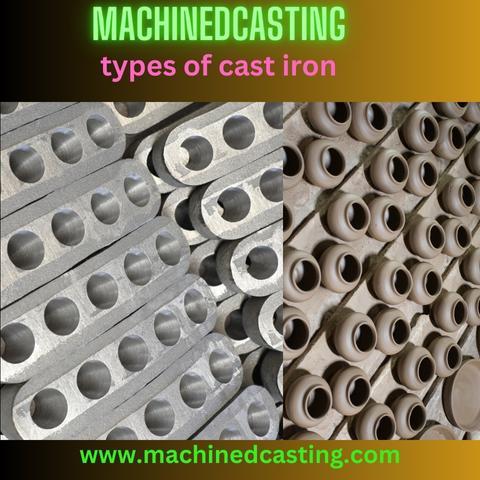Cast iron is a versatile and durable material known for its exceptional heat retention and even heating properties. This timeless material has been a staple in various industries for centuries, thanks to its strength, resilience, and adaptability. In this comprehensive guide, we will explore the different types of cast iron and their unique characteristics.
- Gray Cast Iron
Gray cast iron is the most common and widely recognized type of cast iron due to its gray appearance when fractured. It is known for its excellent castability, wear resistance, and cost-effectiveness. Gray cast iron is made primarily from iron, carbon, and silicon, with small amounts of other alloying elements. Its graphite microstructure gives it its distinctive appearance and contributes to its excellent thermal conductivity. Gray cast iron is often used in engine blocks, pipes, and cookware.
- White Cast Iron
White cast iron is similar to gray cast iron in composition but differs in its microstructure. It has a white, crystalline appearance due to the formation of cementite, a hard and brittle iron carbide. White cast iron is extremely hard and wear-resistant, making it suitable for applications like grinding balls, mill liners, and cutting tools. However, its brittleness limits its use in applications requiring impact resistance.
- Ductile Cast Iron (Nodular Cast Iron)
Ductile cast iron, also known as nodular cast iron or spheroidal graphite iron, is characterized by the presence of spherical graphite nodules in its microstructure. These nodules give the material improved mechanical properties, such as higher tensile strength and ductility, compared to gray cast iron. Ductile cast iron is widely used in automotive and construction industries for components like crankshafts, gears, and water pipes.
- Malleable Cast Iron
Malleable cast iron is a cast iron that has been heat-treated to convert the carbon in the form of graphite into a nodular or temper carbon. This process imparts better ductility and impact resistance to the material compared to gray cast iron. Malleable cast iron is often used for making pipe fittings, hand tools, and ornamental castings.
- Compacted Graphite Iron (CGI)
Compacted graphite iron is a relatively newer type of cast iron known for its unique microstructure, which falls between gray and ductile cast iron. It contains vermicular (worm-like) graphite nodules that offer improved thermal conductivity, strength, and high-temperature properties. CGI is gaining popularity in the automotive industry for engine components, particularly in high-performance and lightweight applications.
- Alloyed Cast Iron
Alloyed cast iron is a versatile category that includes various cast iron types with added alloying elements like nickel, chromium, and molybdenum. These additions enhance specific properties such as corrosion resistance, heat resistance, and wear resistance. Alloyed cast iron finds applications in industries such as aerospace, automotive, and chemical processing.
- Vermicular Cast Iron
Vermicular cast iron has a microstructure that falls between gray and nodular cast iron. It features irregularly shaped graphite nodules and exhibits a good combination of strength and ductility. Vermicular cast iron is used in applications where both wear resistance and toughness are required, such as brake discs, gears, and cylinder liners.
Conclusion
Cast iron, with its diverse types, offers a wide range of options to cater to various industrial needs. Each type of cast iron has its own unique properties, making it suitable for specific applications. Whether you're looking for strength, wear resistance, or heat retention, there's a type of cast iron that can meet your requirements. Understanding the characteristics of these different cast iron types is crucial for making informed decisions when selecting materials for a project or product.


